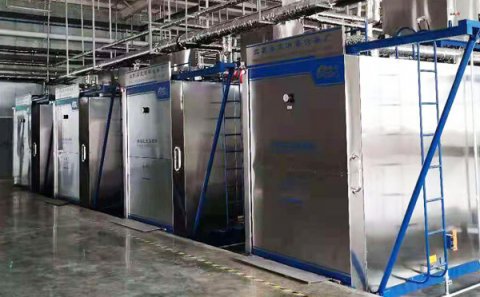
In practical applications, the rate can be determined as the time (with tolerance) required to achieve a specified pressure change.
a) The minimum temperature at which the product enters the sterilization process and / or the specified conditions required to reach the minimum required temperature;
b) Pretreatment (if used)
- 1) Time in the chamber / area, temperature and humidity of the chamber / area;
- 2) Temperature and humidity of sterilization load;
- 3) The longest running time from the removal of the load from the pretreatment to the start of the sterilization cycle;
c) Vacuum degree and emptying rate (if used)
Holding time under vacuum, if used;
Note: the evacuation rate is usually defined as the minimum allowable evacuation time, the maximum allowable evacuation time or the acceptable evacuation time range, rather than the specific time of each operation.
d) Inert gas flushing (if used)
- 1) The pressure associated with the inert gas / steam (Δ P or terminal pressure) and the rate at which the pressure is reached (Δ P / time);
- 2) The depth (Δ P or terminal pressure) and rate (Δ P / time) of reaching vacuum;
- 3) Any number of repetitions and repetitions;
e) Conditioning and / or humidity retention phase (if used)
- 1) Pressure level and / or rate of reaching vacuum or relative humidity level, as controlled and monitored;
- 2) Steam pulse number / vacuum degree (if used);
- 3) Time;
- 4) Test chamber temperature;
- 5) Temperature and humidity of sterilization load at the end of treatment;
f) EO injection and exposure:
- 1) The injection pressure rise (Δ P), injection time and terminal pressure of EO injection phase were analyzed;
-
2) Evidence that the gas EO has entered the sterilization chamber through pressure rise and any of the following ways;
- i) Mass of ethylene oxide used (see d.10.2 I);
- II) direct measurement of EO concentration;
- III) ethylene oxide dosage.
- 3) Sterilization room temperature;
- 4) Exposure time;
- 5) Sterilization load temperature;
- 6) Indication of good operation of the chamber gas circulation system (if used) during exposure;
g) After washing (e.g. after exposure)
- 1) The depth (Δ P or terminal pressure) and rate (Δ P / time) of reaching vacuum;
- 2) The pressure (Δ P or terminal pressure) associated with the inert gas / air / steam and the rate at which the pressure is reached (Δ P / time);
- 3) Any change in the number of repetitions and successive repetitions;
h) Aeration, if used:
- 1) Time and temperature in the test chamber and / or indoor;
- 2) Chamber and / or chamber pressure changes, if any;
- 3) The rate of change of air or other gases;
- 4) Temperature of sterilization load.








Comments: